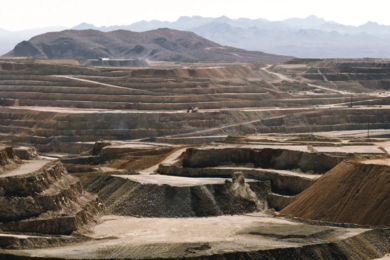The UK’s vote to leave the European Union sent shockwaves Friday through many of the commodities that S&P Global Platts covers. Below are some of the moves seen in Friday’s trading, in information from S&P Global Platts.
Living up to its reputation as a safe haven asset following a plunge in markets and currencies Friday, gold soared 8%, or $100, to a 2.5-year high of $1,359/oz overnight, before easing to around $1,320/oz by midday. In sterling, the price of gold soared nearly 20% to £1,000/oz.
While the immediate impact is a race to safe haven assets, the longer term effect on the global economy may provide more support to gold in the months ahead.
As a non-yielding asset gold benefits from a low-interest rate environment and prices already gained this month from the decision by the US Federal Reserve not to raise interest rates, citing global economic concerns.
Investment demand in gold-backed exchange-traded funds are currently at three-year highs, and bullish positions on US commodity exchange COMEX are at their most bullish position since 2006, revealing the already high level of investment demand in the market. A lower interest rate environment on the back of elevated economic and financial market uncertainty, has a “more fundamental and sustainable positive impact” on gold, one analyst said.
A strong dollar should provide a headwind, however, while the increased volatility and prices should keep physical buyers out of the market for now. Yet as uncertainty in financial markets is expected to only increase in the months ahead, gold prices could benefit strongly in the medium term.
Oil prices moved sharply lower on heightened concerns about the global economy. However some commentators played down the long-term impact on oil markets, as the UK itself entered what could be a prolonged period of uncertainty.
The UK’s Brexit vote will have a bigger impact on the country’s own steel sector than on the global steel marketplace. The UK produced 3.2 Mt of crude steel in the first five months of this year, compared to China’s output of almost 330 Mt.
The Brexit decision led to much talk about Tata Steel’s sale of its UK assets. The Indian conglomerate–whose shares slipped over 9% in Mumbai Friday morning–put its lossmaking UK subsidiary up for sale in March, but was co-opted by the government to postpone the sale until after the referendum. Since then market chatter has suggested it may retain its large Port Talbot plant in Wales, while selling smaller more profitable units.
The likelihood of European imports becoming less competitive after Brexit could help Port Talbot have a more captive domestic market, while the devaluation of the sterling to a 30-year nadir will help its export competitiveness immediately.
However, a source close to the company said the decision could prevent Tata keeping the plant; Europe is a large export market for Port Talbot, which produces too much for domestic consumption, but it is largely uncompetitive given a higher-cost base.
The biggest market reaction across the power-related energy complex was felt in the carbon market amid uncertainty about the UK’s future participation in the European emissions trading scheme with EUA carbon allowances crashing up to 17% from Thursday’s close to trade at €4.91/t by 13:30 London time.
German baseload power for delivery in 2017, the benchmark contract for European power, was down almost 3% on the day at €26.80/MWh by 13:30 London, pulled down by lower carbon emission price.
German power already had a very volatile week amid unprecedented swings in the coal market, however on Friday, a 3% decline for coal was largely offset by a similar decline in the euro/dollar exchange rate with the single currency falling back to $1.10.
UK baseload power for winter 2016 was quoted slightly higher early Friday afternoon at £46.00/MWh, compared with £45.10/MWh at the close Thursday, pulled by more expensive gas prices and the impact of exchange rate on the cost of coal fired generation.
The CIF ARA year-ahead thermal coal futures contract saw a flurry of trading activity before the European trading window opened, with prices opening at $53.50/t, $3.50 lower than Thursday’s close, before falling to $53/t.
However, after 8 AM, activity slowed and prices edged back up to $54.10/t, recovering further to an intra-morning high of $55.55/t around 10 AM as liquidity remained low. “I think the initial drop just reflects nerves,” one London-based trader with a hedge-fund said. “I’m not seeing any fundamental valuation metric [for the moves] really.”
The image is courtesy of http://openeurope.org.uk










